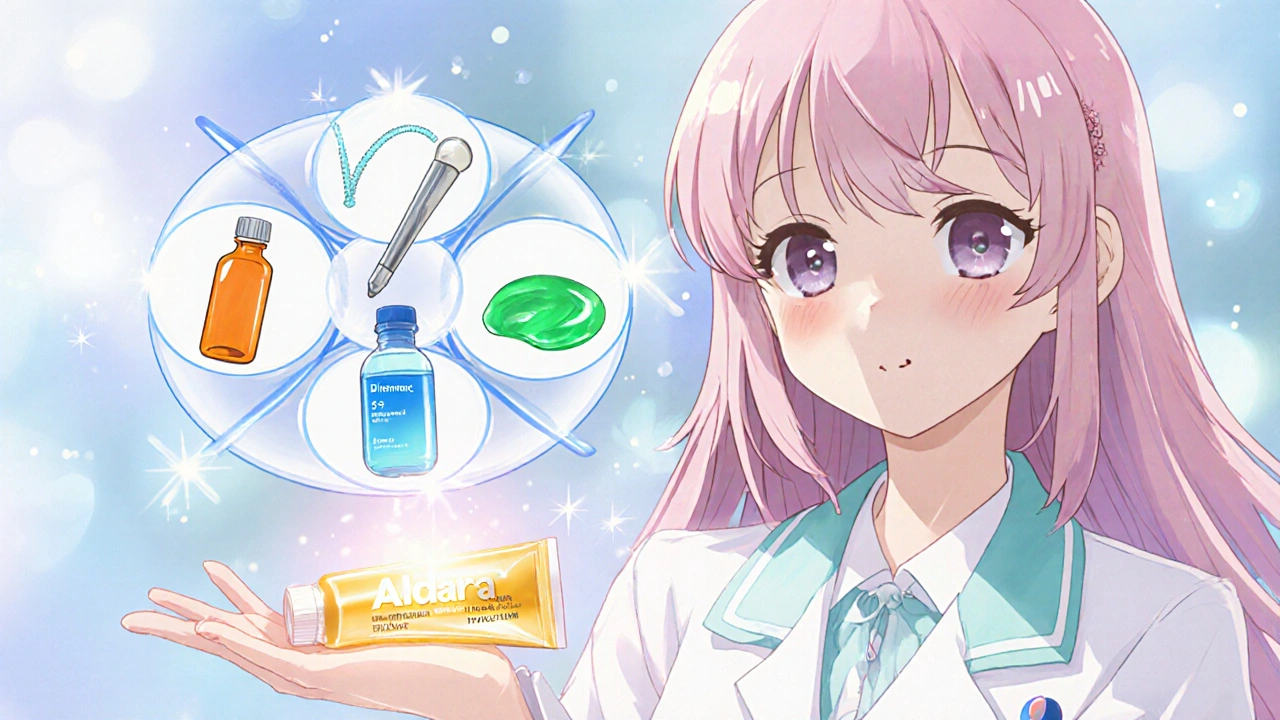Actinic Keratosis: What It Is, Why It Matters, and How to Manage It
When dealing with actinic keratosis, a rough, scaly patch that shows up on skin that’s been exposed to a lot of sun and can progress to cancer if ignored. Also known as solar keratosis, it represents a warning sign of chronic UV damage. Pre‑cancerous skin lesion, the broader category that includes actinic keratosis, alerts doctors that a growth has not yet turned malignant but needs close monitoring. The main driver behind these lesions is UV radiation, high‑energy light from the sun or tanning beds that damages DNA in skin cells, which fuels the transformation process. Understanding that actinic keratosis encompasses pre‑cancerous skin lesions and that UV radiation influences its development creates a clear picture of why protection matters.
Key Prevention and Treatment Insights
Effective management starts with actinic keratosis awareness and a solid prevention plan. Regular skin exams by a dermatologist, the specialist who focuses on dermatology, the medical field dedicated to skin health, catch early lesions before they evolve. During an exam, tools like dermatoscopy help physicians see the subtle features of each spot. If a lesion is confirmed, treatment options range from cryotherapy, freezing the lesion with liquid nitrogen to destroy abnormal cells to prescription topicals such as 5‑fluorouracil or imiquimod, which target abnormal DNA from the inside out. Each method requires the right skill set, so “effective treatment requires dermatology expertise” becomes a practical rule of thumb. For many patients, combining cryotherapy with topical agents yields faster clearance and lowers the chance of recurrence. When dealing with larger or multiple lesions, photodynamic therapy may be recommended, but it still hinges on the same principle: eliminate the abnormal cells before they can become squamous cell carcinoma, the cancer that actinic keratosis can turn into if left untreated.
Prevention is just as critical as treatment. Daily use of sunscreen, broad‑spectrum products that block UVA and UVB rays and wearing protective clothing cut down UV exposure dramatically. Re‑applying sunscreen every two hours, especially after swimming or sweating, keeps the barrier intact. Additionally, limiting time in peak sun hours (10 am‑4 pm) and seeking shade when possible reduces the cumulative UV dose that fuels actinic keratosis formation. People with fair skin, a history of sunburns, or a strong family history should stay extra vigilant, as these risk factors accelerate lesion development. By tying together the concepts of UV radiation, skin‑cell damage, and protective measures, you can see how “sun exposure influences actinic keratosis development” and why a proactive plan works. Below, you’ll find a curated list of articles that dive deeper into each of these aspects—treatment comparisons, risk‑factor breakdowns, and practical steps you can take today to keep your skin healthy.

